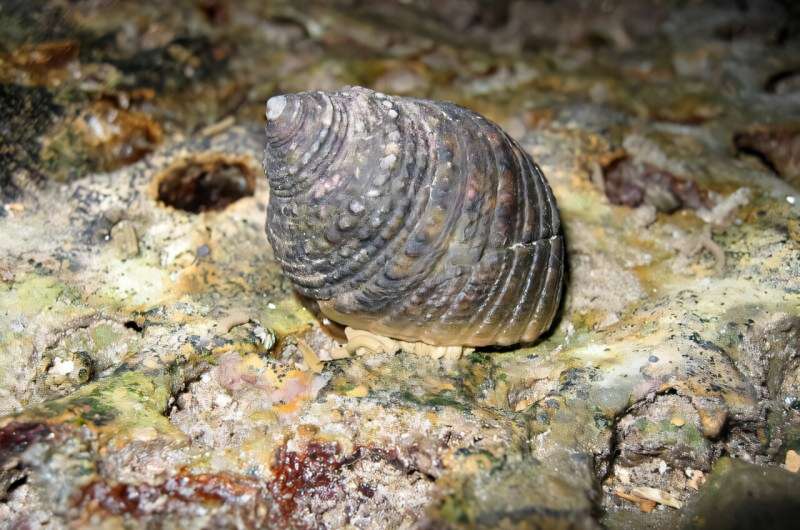In a groundbreaking study, researchers have unveiled a new world map detailing the distribution of marine mollusks, revealing how ancient ocean currents have shaped their biogeographical regions. This research, conducted by Thomas A. Neubauer and his team at the Bavarian State Collection of Paleontology and Geology (SNSB-BSPG), highlights the intricate relationship between geological history and marine biodiversity.
The study, published in Scientific Reports, correlates over three million data points of mollusk distribution with sea temperatures and the historical paths of global ocean currents. These currents, many of which formed millions of years ago, have significantly influenced the habitats of marine organisms, particularly shallow-water mollusks like bivalves and gastropods.
The Role of Geological History in Marine Distribution
Biogeographical regions of marine organisms often align with major global ocean currents, whose geological ages play a crucial role in current distribution patterns. For instance, the closure of the Isthmus of Panama 2.8 million years ago is still evident in the similarity of mollusk faunas between the tropical East Pacific and West Atlantic. In contrast, the Atlantic Ocean, which opened over 100 million years ago, shows a stark difference between its western and eastern faunas.
Neubauer’s research underscores how the transformation of land and sea over millions of years has shaped today’s ocean currents, which in turn influence temperature distribution along marine shelf areas.
Implications of Climate Change on Marine Ecosystems
The study warns of the significant threat posed by rapid climate change, which is altering ocean surface temperatures and, consequently, ocean currents. “Temperature has an immense influence on marine organisms,” Neubauer explains.
“It controls their metabolic functions, reproduction, and life cycle, as well as evolutionary processes such as speciation and extinction.”
The researchers caution that these changes could have profound effects on marine biology and entire ecosystems.
Collaboration and Data Sources
The observational data used in this study were sourced from the Global Biodiversity Information Facility (GBIF) and the Ocean Biodiversity Information System (OBIS). The research was a collaborative effort, involving experts from the Natural History Museum in Vienna and the University of Malaga.
By integrating extensive biodiversity data with historical oceanographic information, the study provides a comprehensive overview of how past geological events continue to influence marine life today.
Historical Parallels and Future Outlook
Historically, shifts in ocean currents have been linked to significant evolutionary changes. The opening and closing of land bridges, like the Isthmus of Panama, have historically driven speciation and extinction events. The current pace of climate change, however, presents unprecedented challenges.
Neubauer and his colleagues emphasize the need for further research to understand the potential long-term impacts of current environmental changes. As ocean temperatures continue to rise, the delicate balance of marine ecosystems may be disrupted, leading to unforeseen consequences for biodiversity and human societies dependent on marine resources.
Looking forward, the study’s findings could inform conservation strategies aimed at preserving marine biodiversity in the face of climate change. By understanding the historical context of ocean currents and their impact on marine life, scientists and policymakers can better anticipate and mitigate the effects of global warming on ocean ecosystems.
For more information, the full study can be accessed in Scientific Reports under the title “Biogeographic patterns of modern benthic shallow-water molluscs and the roles of temperature and palaeogeographic legacy,” DOI: 10.1038/s41598-025-06473-0.
About The Author
 Chicago Suburb to Acquire Pope Leo XIV’s Childhood Home, Sparking Debate
Chicago Suburb to Acquire Pope Leo XIV’s Childhood Home, Sparking Debate Impact of ChatGPT on Student Learning: A Double-Edged Sword?
Impact of ChatGPT on Student Learning: A Double-Edged Sword? Seafood Deregulation Sparks Concerns Over Sustainability and Supply
Seafood Deregulation Sparks Concerns Over Sustainability and Supply Pinecone-Sized Device Could Revolutionize Wildfire Detection
Pinecone-Sized Device Could Revolutionize Wildfire Detection Tennessee Law Revokes Teen Licenses for Bullying Offenses
Tennessee Law Revokes Teen Licenses for Bullying Offenses